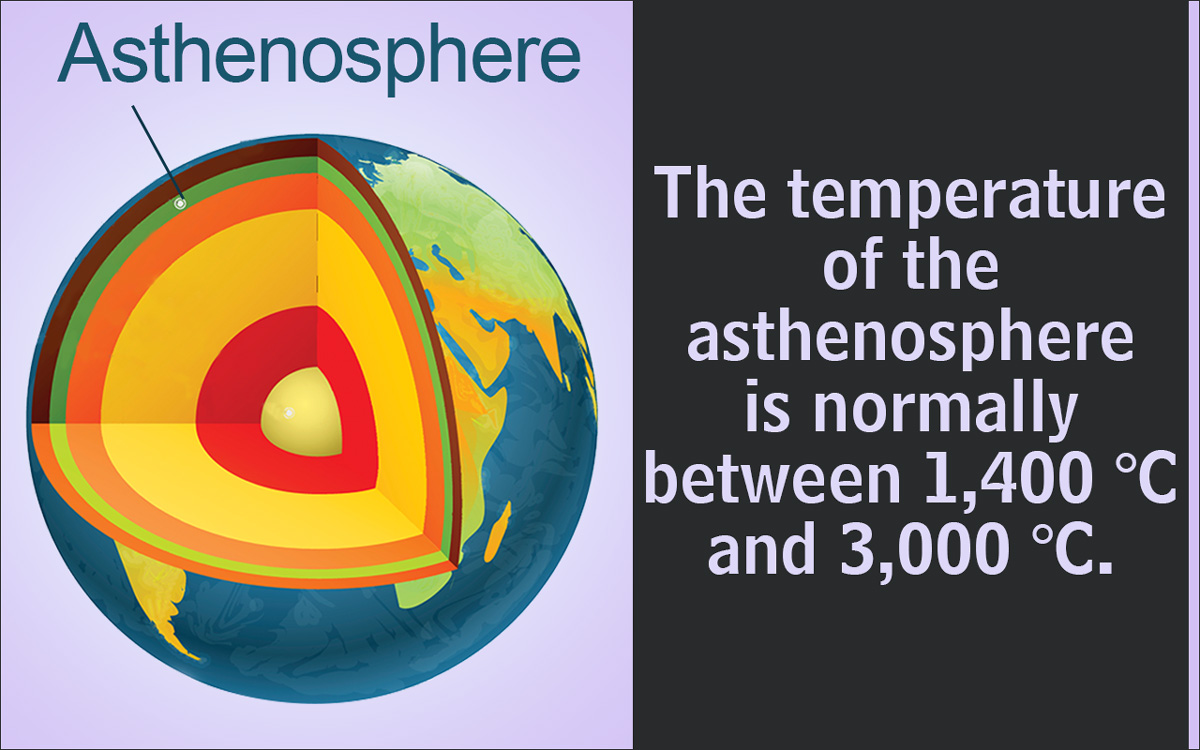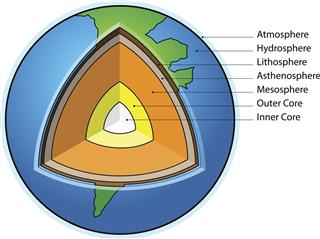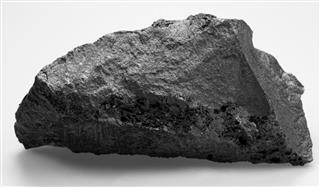
Curious to know what lies beneath the surface of the earth on which we move around? Well, what we see is just one of the many layers that constitute the earth. This article enlists some of the basic facts about the asthenosphere, the layer just below the earth’s crust. Read on…
For about a million years after its formation, our planet was a hot mass of molten matter and there was no atmosphere. Due to the gravitational force of the earth, the heavy metals like nickel (Ni) and iron (Fe) were pulled towards the center of the earth and the light metals rose above to the surface. As the earth cooled down, the crust began to solidify and the first land mass was formed. However, the layers deep below the earth’s surface continue to be hot due to radioactive reactions that are still taking place. Let us have a look at the four layers of the earth along with their distances from the earth’s surface.
- Lithosphere or crust (up to 50 km)
- Asthenosphere or upper mantle (100-250 km)
- Mesosphere or mantle (600-2,500 km)
- Outer core (3,000-5,000 km)
- Inner core (5,000-6,500 km)
Here we shall have a look at some informative facts about the asthenosphere.
Basic Facts about the Asthenosphere
♦ The asthenosphere is composed of matter in the molten or semi-molten state. Its temperature is normally between 1,400 degree Celsius to 3,000 degree Celsius. The very high temperatures in this layer cause everything, including rocks, to melt. It is composed mainly of silicates of iron and magnesium.
♦ The temperature varies with that of the barysphere or core. At certain regions on the earth’s surface, where the temperature of the core is higher, the matter building up the asthenosphere may be found in a molten state.
♦ This layer plays an integral part in the movement of tectonic plates of the earth’s crust. The tectonic plates are parts of the lithosphere, which float on the semisolid asthenosphere below. It is these plates that are responsible for major geological changes such as formation of mountains, rift valleys and plateaus, as well as earthquakes and volcanic eruptions.
♦ We know that the melting point of a substance is directly proportional to the pressure exerted i.e. more the pressure exerted, the higher is the melting point. The melting point of the substances in the asthenosphere is largely influenced by the pressure exerted by the lithosphere above. In case of a crack occurring at the particular spot in the lithosphere, the pressure at that point gets reduced and the asthenospheric matter below reaches its melting point. This molten matter escapes through the crack in the lithosphere and emerges on the earth’s surface as magma or lava from a volcano.
♦ In case the pressure on the asthenosphere gets reduced due to movement of tectonic plates, the molten matter rising above, unable to escape, forms a part of the lithosphere itself.
♦ It is termed as the low velocity zone for the fact that seismic waves move through this layer with a lesser velocity as compared to the lithosphere.
Quick Facts about the Asthenosphere
- J. Barrell, a British geologist, gave the layer its name. He divided the earth’s crust into three major parts and named them lithosphere, asthenosphere and centrosphere.
- The word ‘asthenosphere’ originated from the Greek word asthenis which means ‘weak’. It was named so because of the instability of its constituents.
- At some points on the earth’s surface, it may extend up to 700 km below.
- Its location was determined by studying the velocity of S-waves, a type of seismic waves formed below the earth’s surface.
- The asthenosphere is closer to the surface of the earth in oceans and is within a few kilometers below the surface in ridges on the ocean floor.
- Its density is lesser than that of the lithosphere.
That was about some basic asthenosphere facts. Hope this article helps you get a better understanding about this layer of the earth.

